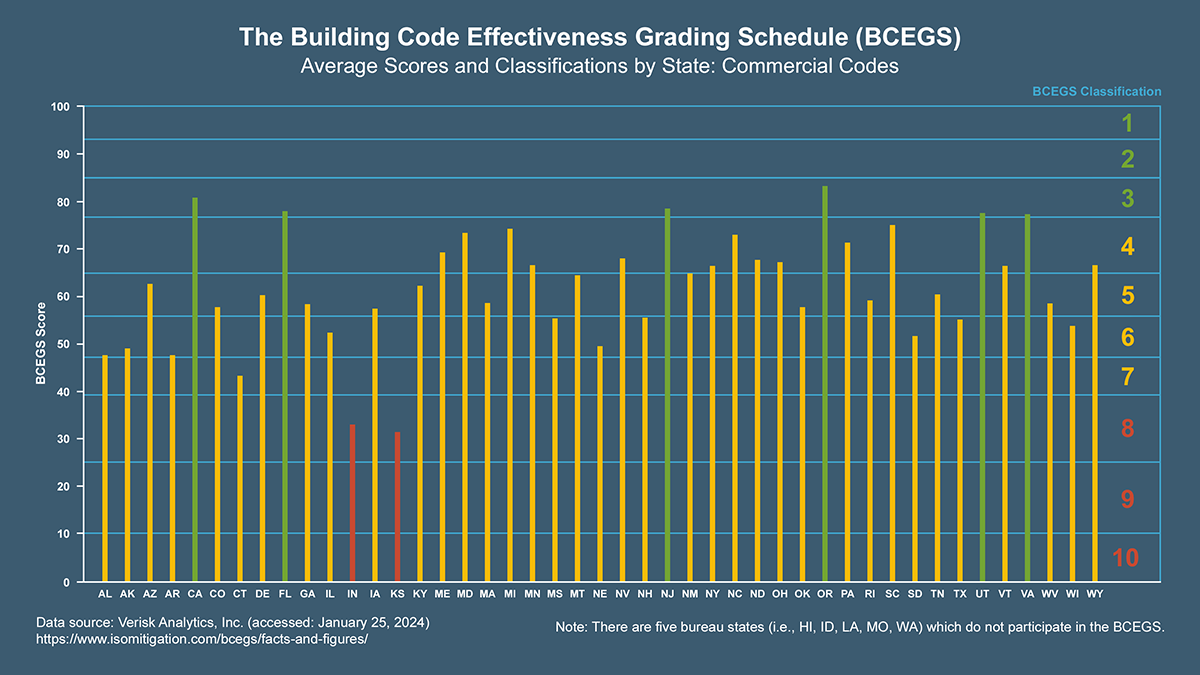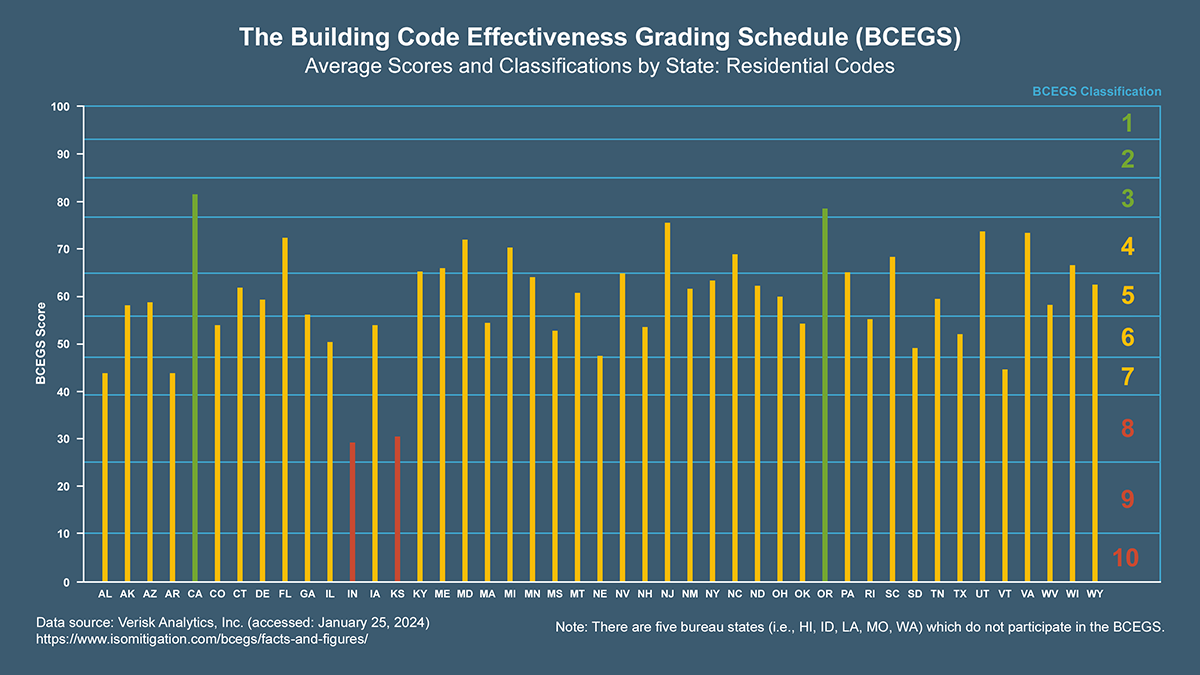The Building Code Effectiveness Grading Schedule (BCEGS) is a program used to evaluate and assess building codes and their enforcement across most jurisdiction in U.S. Developed by the Insurance Services Office (ISO), a subsidiary of Verisk Analytics, Inc., BCEGS serves as a tool for insurance companies to assess the effectiveness of building codes in mitigating risks associated with natural disasters, such as earthquakes, hurricanes, floods, and other natural disasters. The primary objective of BCEGS is to provide insurance companies with a consistent and standardized framework for evaluating the resilience of structures and promoting safer building design and construction practices.
How does the BCEGS scoring work?
The BCEGS assigns a numerical score to a given jurisdiction based on the effectiveness of its building codes and their enforcement. The jurisdiction is evaluated based on a comprehensive set of categories regarding state or local building code policies and practices in 27 different areas of focus including code adoption and enforcement, building department resources, community outreach, and education initiatives—factors that contribute to the overall resilience of a community's built environment. Across the areas of focus, values are calculated based on the terms of ISO’s BCEGS schedule to determine a score on a 0-to-100-point scale for both commercial buildings and one- and two-family residential dwellings.
The BCEGS score correlates to a 1-to-10 classification rating.
The BCEGS score correlates to a classification rating that ranges from 1 to 10, with a lower rating indicating higher levels of building code effectiveness. Jurisdictions with lower BCEGS classification ratings are considered to have more stringent and well-enforced building codes, making them less susceptible to property damage and loss in the event of a natural disaster. Jurisdictions with higher BCEGS classification ratings may receive lower insurance premiums, as the risk of property damage is perceived to be lower due to more robust building codes and enforcement. As such, the BCEGS classification ratings may serve as a risk assessment tool for insurance companies to determine appropriate premium rates for property insurance policies.
BCEGS in insurance underwriting and pricing.
Participating insurers can use the BCEGS classification ratings, or the underlying data, to make better informed underwriting decisions and/or develop pricing strategies. By incorporating BCEGS scores into their risk assessment processes, insurers can tailor coverage and pricing based on the specific risk profile of a given community. This allows insurance companies to align premiums with the level of risk associated with natural disasters—ultimately promoting a more sustainable and resilient built environment and a more stable insurance market.
Simply put: underwriters understand that a lower (better) BCEGS classification rating generally means that structures with that community are likely to perform better during natural disasters—which can be reflected in available coverage options, lower premium rates, and the like.
BCEGS classifications as an index to qualify for disaster relief.
Beyond insurance underwriting and pricing, a more favorable BCEGS classification makes a community better able to qualify for Hazard Mitigation Grants from FEMA. BCEGS classifications are currently part of the criteria for receiving discounted flood insurance premiums from the National Flood Insurance Program (NFIP) through the Community Rating System (CRS) program. Just as insurers use BCEGS scores and classification ratings to assess risk and determine appropriate premium rates, so too may jurisdictions leverage BCEGS data to adopt up-to-date building codes and enforce them more effectively. Such a collaborative approach between insurers and communities would contribute to safer buildings, more stable insurance markets, and greater community resilience.
|
Figure 1: The Building Code Effectiveness Grading Schedule (BCEGS): Average score and classifications by state for commercial codes (data as of January 25, 2024). Figure by Daniel Overbey. |
|
Figure 2: The Building Code Effectiveness Grading Schedule (BCEGS): Average score and classifications by state for residential codes (data as of January 25, 2024). Figure by Daniel Overbey. |




Recent Comments
These are actually very helpful tips. It is...
This is the most beneficial blog for all...
This blog is a great resource for anyone...
Thank you for sharing this important information. I...
This is a very interesting subject of the...